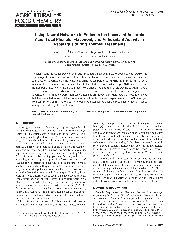摘要
Artificial neural networks (ANNs) with back-propagation algorithm were developed to predict the percentage loss of ascorbic acid, total phenols, flavonoid, and antioxidant activity in different segments of asparagus during water blanching at temperatures ranging from 65 to 95 degrees C as a function of blanching time and temperature. In this study, the one-hidden-layer ANNs are used, and the number of neurons in the hidden layer were chosen by trial and error. Optimized ANN models were developed for predicting nutrient losses in bud, upper, middle, and butt segments of asparagus. ANN models were then tested against an independent data set. Our results showed that the predicted values of the correlation coefficients between experimental and ANNs ranged from 0.8166 to 0.9868. Therefore, ANNs could be potential tools for the prediction of nutrient losses in vegetables during thermal treatments.
- 出版日期2010-3-10
- 单位浙江师范大学
